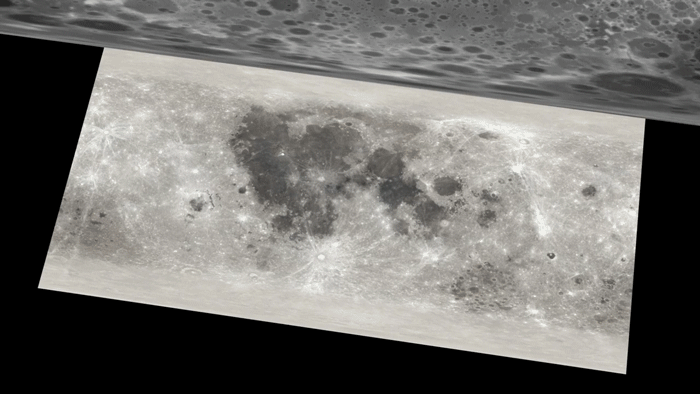NASA Shares Incredible 3D Map of the Moon
Clouds may interfere with your skywatching for International Observe the Moon Night, but there's always a perfect view of our satellite in a stunning new NASA animation of the lunar landscape.
The animation, called the CGI moon kit, is composed of data from NASA's Lunar Reconnaissance Orbiter (LRO). The agency released it online to make data more accessible to 3D artists, according to a statement from NASA.
"[The moon kit] will bring the LRO data within reach of lots of other artists who want to do the kinds of things that I do," Ernie Wright, creator of the CGI moon kit and a science visualizer at the Scientific Visualization Studio at NASA's Goddard Space Flight Center, said in the statement.
Related: Amazing Moon Photos from NASA's Lunar Reconnaissance Orbiter
Wright used 3D animation software to create the CGI moon kit, which was originally intended to be a resource for NASA's Scientific Visualization Studio. However, after receiving several requests, Wright decided to make his visualizations available to the public, allowing others to connect with the LRO mission.

NASA's LRO has been studying Earth's moon for the past 10 years. The spacecraft is designed to map the topography of the lunar landscape and develop a deeper understanding of the moon's environment in preparation for when humans return to the moon.
LRO data is readily available online, but it can be difficult to interpret. Visualizations, however, make the data more accessible to people with no technical science background. Releasing the 3D map online allows more people to appreciate and use it, which, in turn, contributes to the overall success of the LRO mission, Wright said.
Get the Space.com Newsletter
Breaking space news, the latest updates on rocket launches, skywatching events and more!
The orbiter is equipped with a camera that acts as a scanner, building an image line-by-line. It also has laser altimeter (called the Lunar Orbiter Laser Altimeter, or LOLA), which uses laser pulses to detect the dimensions of the moon, according to the statement.
"A single laser pulse is sent down and divided into five separate beams. The pulses reach the moon's surface and bounces back to the spacecraft," according to the statement. "LOLA then measures the nanoseconds it takes for the beam to return as a means of reading the moon's topography."
The quicker the beam returns to the spacecraft, the higher the moon's elevation is at that point. The instrument can also give scientists a sense of the texture of the lunar surface because rocky or rough terrain will give the beam a scattered appearance.
"[Wright] can help tell the story using the LRO data, and illustrate difficult-to-communicate ideas or concepts," Noah Petro, an LRO scientist at Goddard, said in the statement. "I think he's already had some influence on how people consume the information, when they don't even know it."
Using the LRO data, Wright is also able to depict what the lunar surface will look like in the future. Therefore, his animations can be used to identify potential landing spots for NASA's Artemis program, which aims to send astronauts back to the moon by 2024 and develop an ongoing presence there.
The CGI moon kit can be accessed online.
- Why Is It So Hard to Land on the Moon?
- Who Will Be the First Woman on the Moon?
- Lunar Robotic Mission Heracles Will Scout for Human Landings
Follow Samantha Mathewson @Sam_Ashley13. Follow us on Twitter @Spacedotcom and on Facebook.

Join our Space Forums to keep talking space on the latest missions, night sky and more! And if you have a news tip, correction or comment, let us know at: community@space.com.

Samantha Mathewson joined Space.com as an intern in the summer of 2016. She received a B.A. in Journalism and Environmental Science at the University of New Haven, in Connecticut. Previously, her work has been published in Nature World News. When not writing or reading about science, Samantha enjoys traveling to new places and taking photos! You can follow her on Twitter @Sam_Ashley13.
